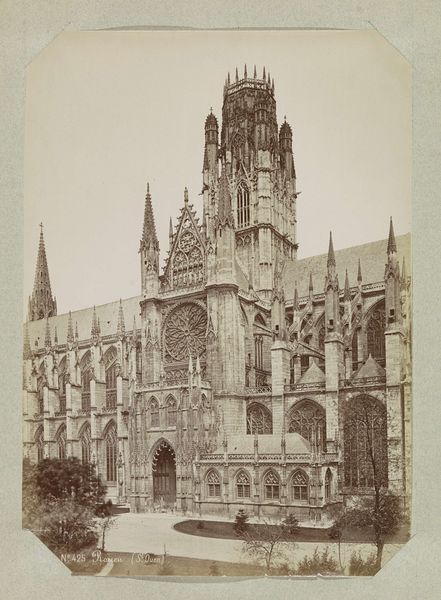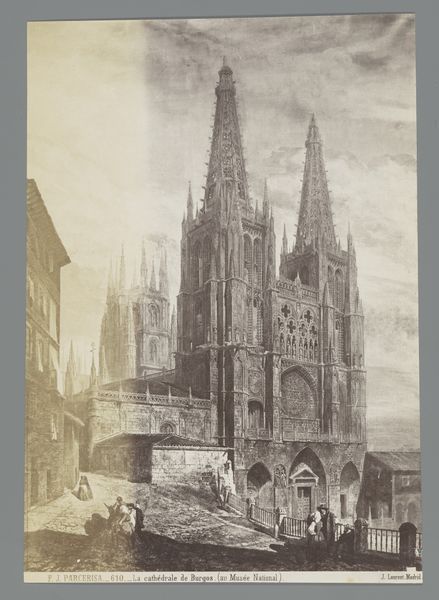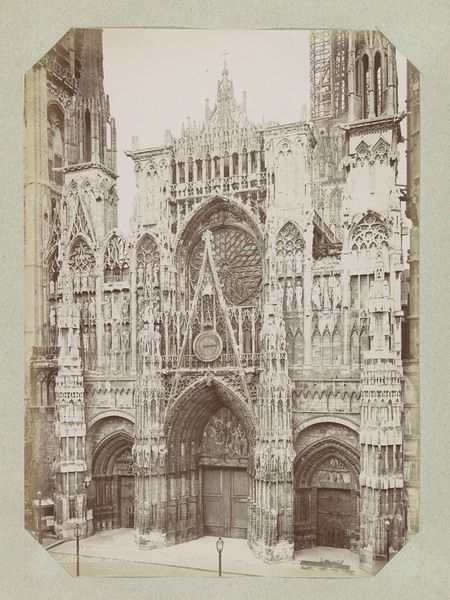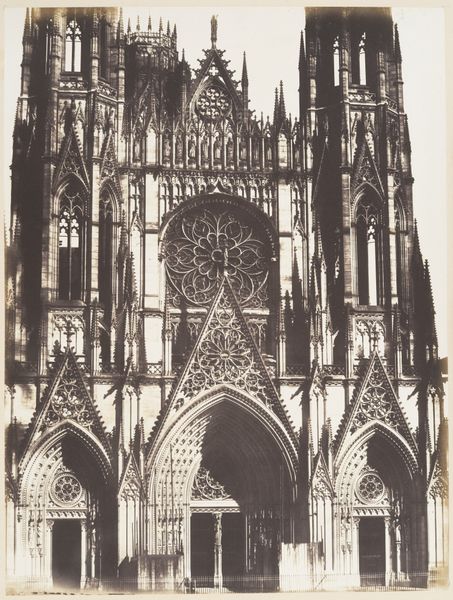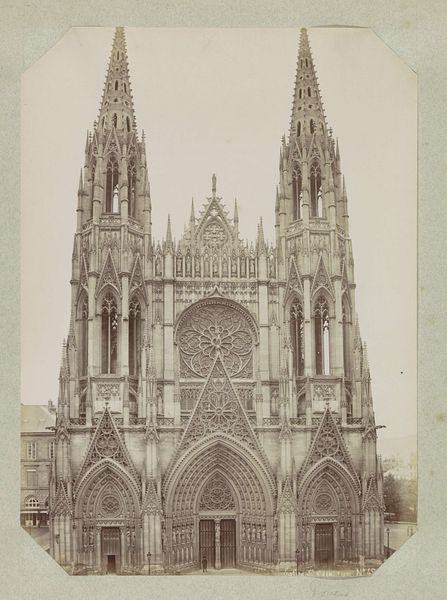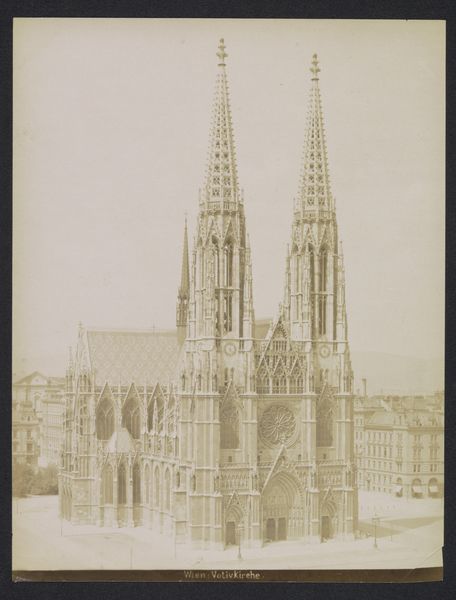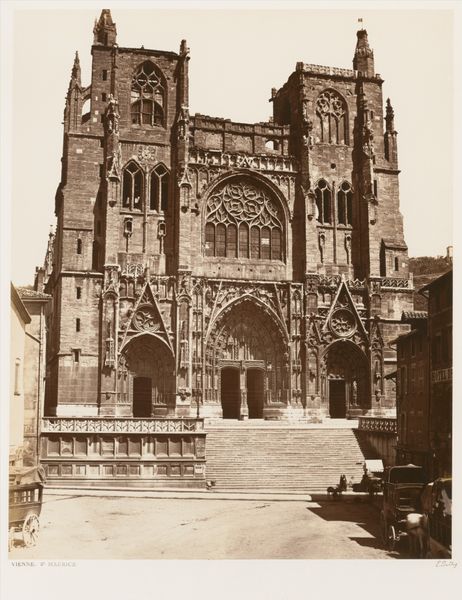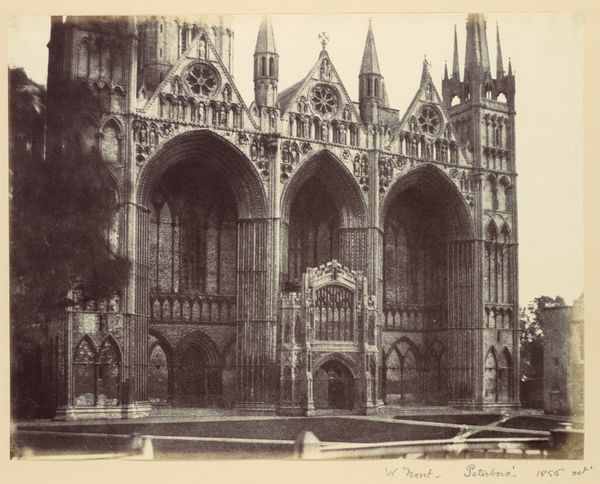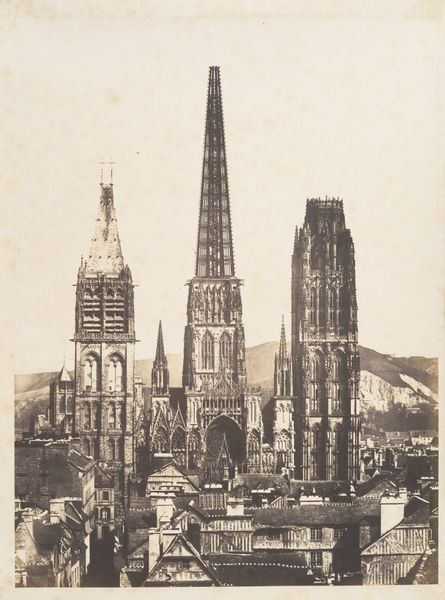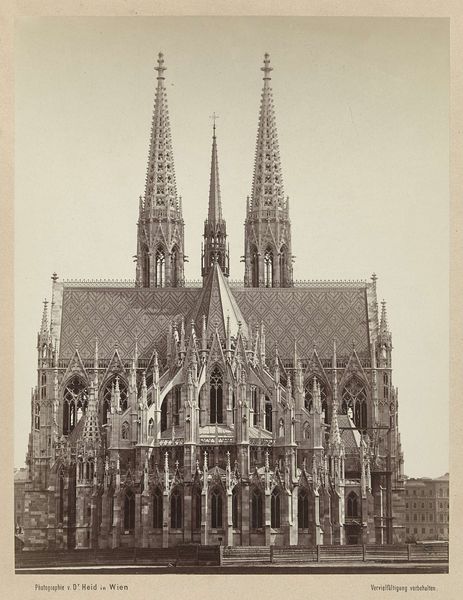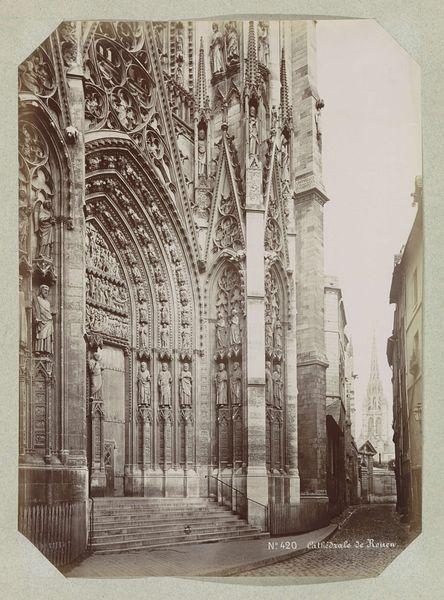
Gezicht op de kathedraal van Burgos, op de voorgrond de Puerta Pellejería 1856 - 1863
0:00
0:00
Dimensions: height 333 mm, width 249 mm
Copyright: Rijks Museum: Open Domain
Editor: So, here we have Juan Laurent's photograph, "View of the Cathedral of Burgos, in the foreground the Puerta Pellejería," taken between 1856 and 1863. It's a gelatin-silver print, and it really emphasizes the imposing height of the cathedral. What strikes you most about it? Curator: What I find compelling is how this photograph, beyond being a stunning visual record, participates in 19th-century power dynamics. Architectural photography like this wasn’t just about aesthetics; it served to document and, in a way, legitimize cultural dominance through its representation of monumental structures, specifically of religious importance. Editor: Dominance? In what sense? Curator: Think about the historical context: Spain at a time of great colonial ambitions, and the Church wielded considerable power and wealth. Photography provided a new tool for visually reinforcing their cultural narrative. Did Laurent intentionally critique this? Perhaps not, but his image undeniably contributed to shaping perceptions. Do you consider that the perspective he takes, the height of the framing, is innocent or strategically placed? Editor: That's interesting; I hadn't considered that perspective. The way he’s framed the cathedral from below makes it seem almost overwhelmingly powerful, almost…unreachable. Curator: Exactly! And what does that signify for those who interact with the image, either then or now? Think about who had access to these images, who commissioned them, and what impact they might have had on social and political perceptions. Considering that historical photographs sometimes participated in romanticizing idealized views and obscuring the complicated reality of social inequality or local forms of expression. Editor: So it’s less about the cathedral itself, and more about what its depiction represents about 19th-century Spanish society? That's given me a lot to think about, particularly regarding the inherent biases present within photography of historical settings. Curator: Precisely. By understanding these biases, we can better interpret and contextualize the visual stories these photographs tell. It becomes a tool for critical inquiry.
Comments
No comments
Be the first to comment and join the conversation on the ultimate creative platform.

